Lifting safely
The larger muscles in your legs and buttocks are better for lifting than your back muscles. Your back muscles work with your abdominal muscles to help maintain your balance while you lift.
Before lifting something, consider how heavy it is and how to best lift it. Always test the weight of an object before lifting it.
When lifting something:
- tighten your abdominals before lifting and do not hold your breath
- keep the load as close to your body as possible
- use your legs as much as possible
- if you need to turn while lifting, step to turn with your feet instead of twisting with your back
Types of lifts
One knee lift
Use this technique to lift heavy or awkward items at floor level. It helps you get closer to the object but requires strong legs and healthy knees.
- Kneel on one knee beside the object.
- Bring the load close to you.
- Straighten through your knees to stand while keeping your spine straight.
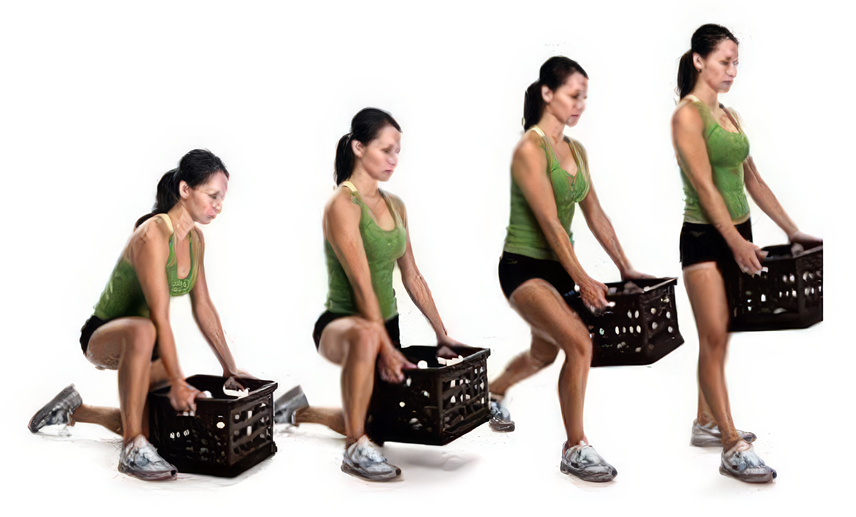
Photo by advancedhealth.ca
Squat lift
- Stand in front of the load with your feet slightly apart and spread wider than the item you will lift.
- Squat by hinging at the hips and bending at the knees while keeping your back straight.
- Hold the object as close to your body as possible.
- Contract your abdominals and use the muscles of your hips and legs to lift up.
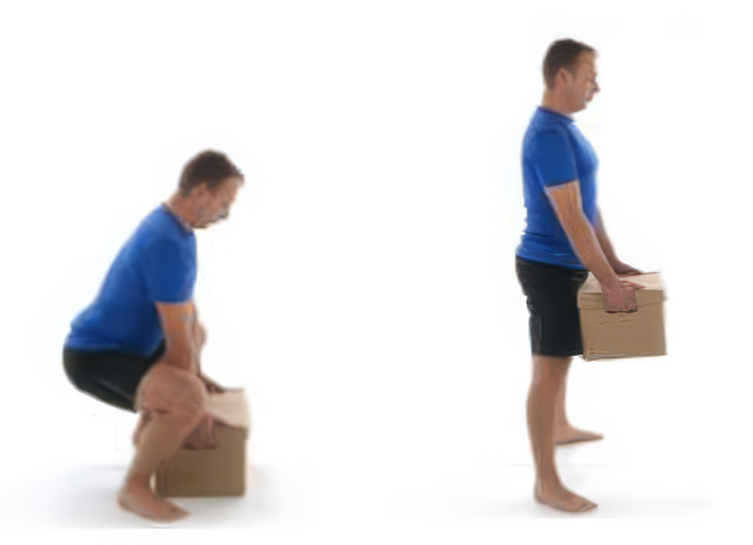
Photo by Wibbi
Partial squat
This technique is similar to the squat lift but reduces stress on the knees. It is good for objects at knee height, or items with a handle.
- Keep your back in a neutral, lengthened position.
- Bend your knees slightly and hinge forward at the hip. You can place one foot in front if you have a stiff knee.
Golfer's lift
This technique is for picking up objects with one hand. It is beneficial if your legs are weak or if you have sore knees.
- Find a solid object for support, such as a chair.
- Bend at the hip, extending one leg behind while keeping your spine straight.
- To return to standing, lower the extended leg as you raise your upper body.
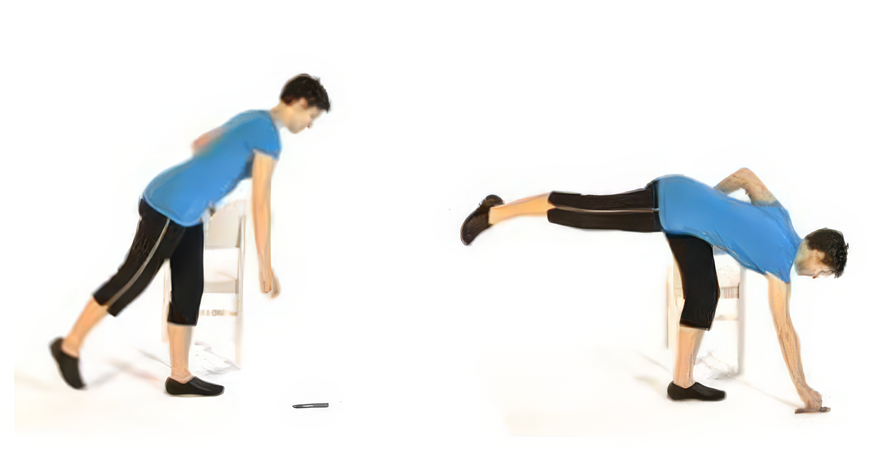
Photo by Wibbi
Straight leg lift
Use this technique in tight, awkward spaces such as lifting objects out of the trunk of a car. It can be helpful if your hip and knee bending is limited.
- Bend forward at the hips, not at the waist. Do not allow the back to become rounded.
- Keep your legs straight or slightly bent at the knees. They can be together, or you can have one leg slightly in front of the other.
- Get as close to the load as possible. Make sure you are bending at the hips, not in your back.
- Keep your back straight and your head up while you lift.
Moving objects safely
Lifting an object
What to avoid
Never round your back while or lock your knees while lifting. This will put more stress on your spine.
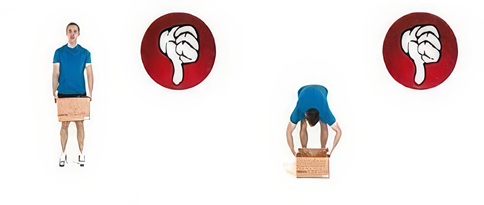
Photo by Wibbi
What to do instead
Keep your back straight and bend your knees to lift an object.
Carrying an object
What to avoid
Do not hold the object away from your body when you are carrying it.

Photo by Wibbi
What to do instead
Always hold the object as close to your body as possible. Tighten your abdominal muscles and keep your spine straight to reduce stress on your spine.
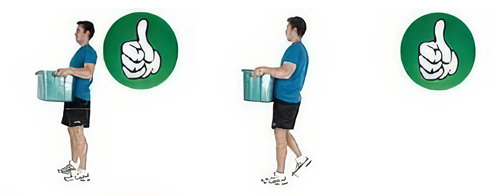
Photo by Wibbi
Pushing or pulling an object
What to avoid
Do not move the object with your arms outstretched. Avoid bending your torso forward.
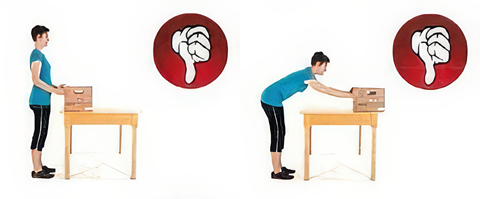
Photo by Wibbi
What to do instead
Use your legs to do the work and slide the object instead of lifting it. Place your feet in a stepping position (one leg further ahead than the other) and move your weight from one leg to another as you move the object.
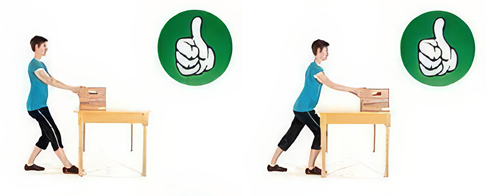
Photo by Wibbi
Moving an object
What to avoid
Avoid twisting or bending your back as you move an object.
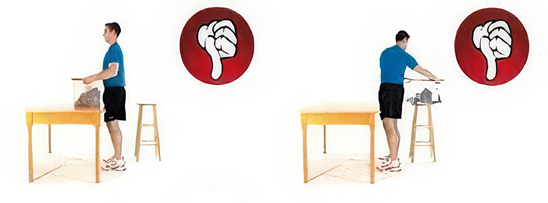
Photo by Wibbi
What to do instead
Stand in front of the object. Lift using your legs and keep your back straight. Keep the object close to your body and move your feet to transfer your weight.
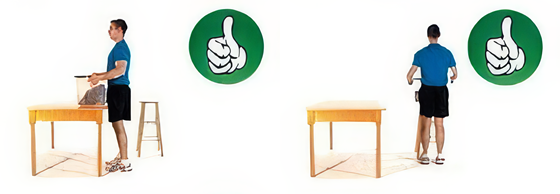
Photo by Wibbi